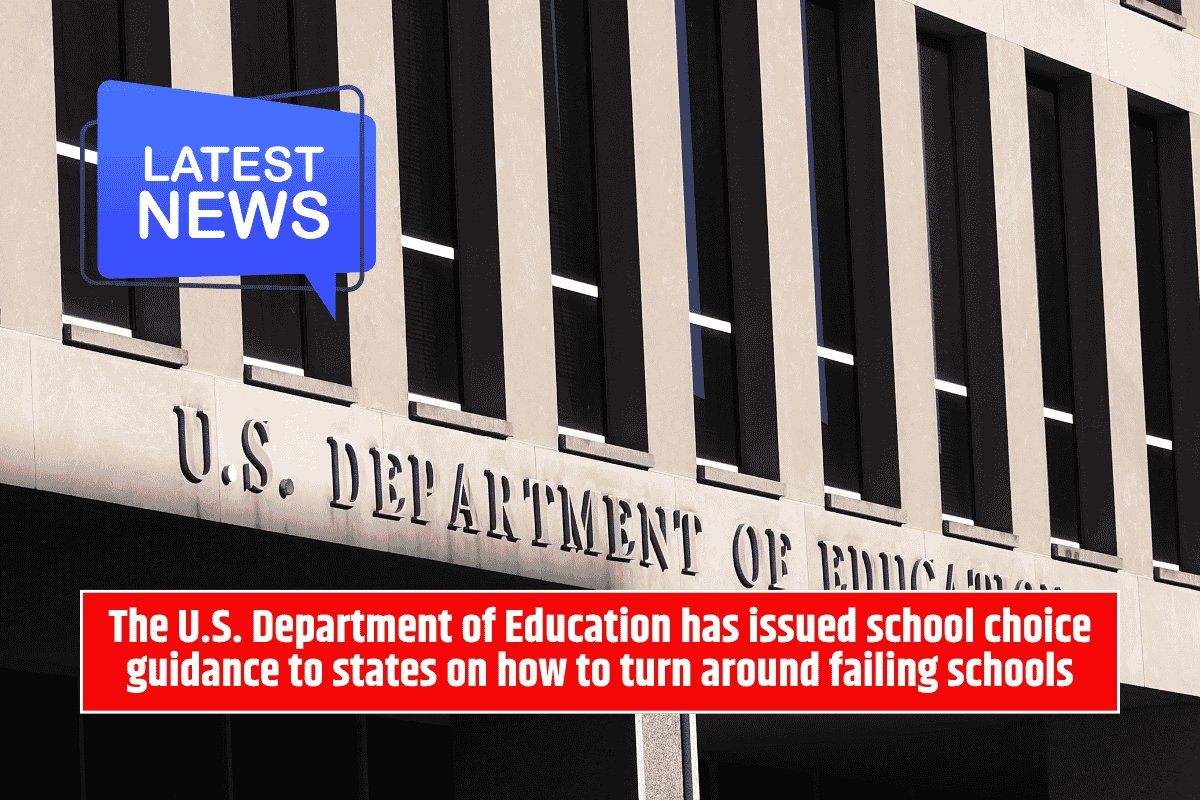The U.S. Department of Education’s Office of Elementary and Secondary Education recently sent a letter to state school officers, providing new guidance on how they can use federal funds under the Elementary and Secondary Education Act of 1965 (ESEA) to both expand education options for students and improve underperforming schools.
This guidance is particularly aimed at schools that have been identified for support due to their low performance, such as those requiring comprehensive support and improvement (CSI), targeted support and improvement (TSI), or additional targeted support and improvement (ATSI).
Expanding Education Choice and Improving Schools
The primary focus of the guidance is to help turn around schools that are struggling. Schools falling under the CSI, TSI, or ATSI categories need additional support to improve academic outcomes and provide students with better educational opportunities.
The U.S. Department of Education recognizes that while turning around underperforming schools is important, students in those schools should also have access to a range of educational options that best meet their individual needs.
Acting Assistant Secretary for the Office of Elementary and Secondary Education, Hayley Sanon, emphasized that ensuring students in underperforming schools have options is a crucial step.
She said, “Every year that a child spends in school is precious and cannot be wasted,” and that students deserve the right to choose a school that will help them reach their full potential.
The goal is for states to use this guidance to help schools improve while providing more options for students.
Success Stories from States
The guidance also highlights success stories from various states that have used similar strategies to improve education.
Dr. Cade Brumley, Louisiana’s Superintendent of Education, shared that Louisiana’s success in education is largely due to strategic actions, such as expanding school choice.
He stated that the guidance from the Department of Education would give more students access to high-quality schools and return critical decision-making to state authorities.
Indiana’s Secretary of Education, Dr. Katie Jenner, discussed the state’s approach to school improvement through a competitive grant process for federal school funds. This process allows Indiana to focus on learner-centered approaches, including improving literacy, STEM education, and rethinking high school.
By using the new guidance, Dr. Jenner expressed confidence that Indiana can continue to empower students and families by offering more educational choices.
Understanding ESEA Section 1003(a) and School Improvement Funding
Under ESEA Section 1003(a), states are required to reserve seven percent of their Title I, Part A funding to support school improvement activities for schools identified as CSI, TSI, or ATSI.
These funds are distributed through competitive grants, allowing states to prioritize the most effective strategies for improving schools in their communities.
Local education agencies (LEAs) or schools identified for support must develop a plan, in partnership with stakeholders, to improve student outcomes.
While there is no requirement to offer school choice to students in underperforming schools, states have the option to prioritize school districts that are not only turning around schools but also providing students with more choices.
This flexibility allows states to find the best solutions for their students while improving educational outcomes.
What This Means for Students and Families
For students in underperforming schools, this guidance provides an opportunity for significant improvements in their educational experience.
By giving states the ability to expand school choice, they can ensure that students have access to schools that better meet their needs. This approach empowers families to make decisions about their children’s education, increasing access to high-quality options.
For states, this guidance is an opportunity to further improve educational outcomes while maintaining flexibility in how funds are used.
The hope is that by expanding educational opportunities and focusing on school improvement, more students across the country will benefit from a better education.






